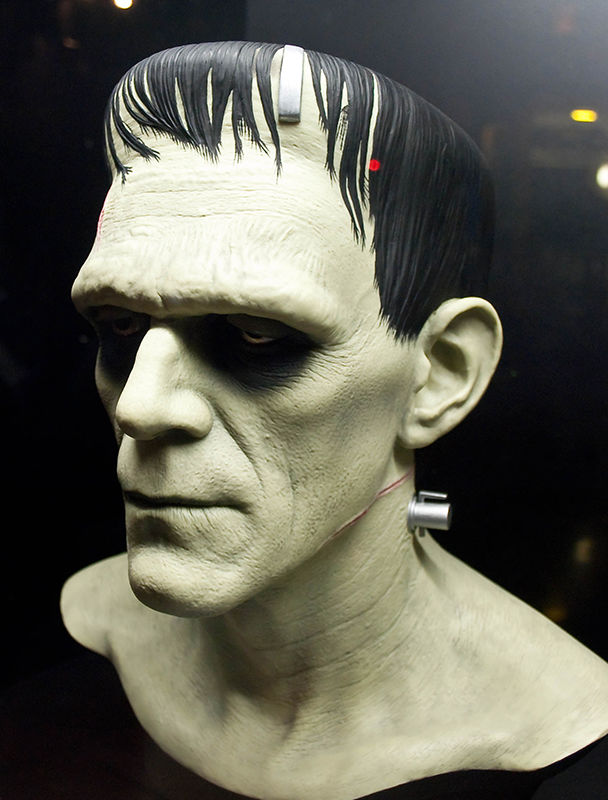I realize it may be a bit early for Halloween, although a trip to any number of home improvement mega stores, department stores and supermarkets could make one think the holiday was yesterday. Now comes news that an Italian neuroscientist plans on performing the first human head transplant and the Halloween industry just got a dozen themes for a new costume line.
Of course the first thought that came to my mind — and face it, it came to yours too — is that we all hope he doesn’t use a brain from one “Abby Normal.” But the second thought we all should have had is that we need to take a step back, think long and hard about what all this means in the context of Church teaching, and then marvel at the amount of hubris this so-called scientific endeavor requires. How did we get to the point where a legitimate medical professional is considering something one usually only finds in a grainy black and white horror film from the 1930s and 1940s, starring either Boris Karloff or Bela Lugosi.
Yes, it does sound ridiculously far-fetched, but it wasn’t all that long ago that heart transplants, reattaching functioning fingers and some cancer killing medical procedures were in the fantasy aisle of human aspiration. We do seem to be on an exponential explosion of scientific advancement. Just think, for the most part, people in 1900 A.D. got around the same way they got around in 1900 B.C. One little century later though, space shuttles were obsolete and if our microwave doesn’t get our coffee piping hot in 30 seconds we think something must be wrong.
Unfortunately, as advanced as the science gets, we are still the same fallen creatures in need of God’s love and intervention. Without it, you get things like national socialism, gulags and a medical experiment right out of Mary Shelley’s imagination.
“Frankenstein” was Shelley’s masterpiece — one of the most famous books almost no one you know has ever read — and it still has a lot to teach us, which is remarkable when you consider it was written by a 21-year-old woman in 1818. The book really isn’t anything like the movie versions, which almost every one of you likely has some familiarity with.
The “monster” is so much more than a grunting, flat-headed beast with electrodes sticking out of his neck. And Victor Frankenstein is more than just a mad scientist. He is a man who at first is consumed by what he may be capable of doing, not in what he should be doing — just like real scientists today who can extract stem cells from aborted human beings or who purchase discarded body parts from the abortion/industrial complex.
The novel “Frankenstein” is about a lot of things that have a connection to today and relevancy to stories about modern-day scientists who believe they have a man-made right to do whatever they deem valid. At its core, it is a novel about consequences:
“I saw the pale student of unhallowed arts kneeling beside the thing he had put together. I saw the hideous phantasm of a man stretched out and, then, on the working of some powerful engine, show signs of life and stir with an uneasy, half-vital motion. Frightful must it be; for supremely frightful would be the effect of any human endeavor to mock the stupendous mechanism of the creator of the world.”
It certainly proved “frightful” to Victor Frankenstein as he immediately realizes what he has done upon the reanimation of dead tissue and proceeds to have a complete and total nervous breakdown.
Interestingly, in the book — and completely thrown out the window by the Hollywood scriptwriter’s of the 1930s — was the effect Frankenstein’s rejection had on his creation. The monster is hurt, alone and hated everywhere he goes because he looks grotesque. Being over eight feet tall, as described in the book, probably didn’t help him fit in with the crowd either.
It is when the monster hides out in the countryside and observes a happy but poor farm family that he learns about the good of life. At the same time, he realizes that, despite having taught himself to read, speak and absorb the great works of literature from the family’s library, he will never participate in that good. This leads to hatred and rage, resulting in very bad things for both creature and creator.
Whether the proposed brain transplant operation takes place in two years or two centuries from now, I doubt the patient will embark on a world-wide killing spree as Frankenstein’s creation did. But, I can almost positively state that there will be consequences. Who knows, maybe it will create a black market in human body parts … oh.
The doctor considering the human head transplant recently presented his case to a TEDx symposium. The graphic used during the video presentation featured Boris Karloff as Frankenstein’s creature — of course.
Robert Brennan has been a professional writer for more than 30 years, including many years in the television industry.

